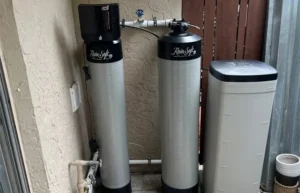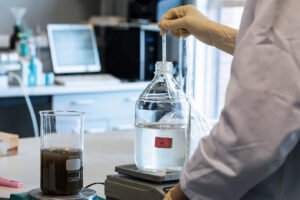Alarming Levels of Forever Chemicals in Pennsylvania Drinking Water
Recent water quality testing has revealed the presence of forever chemicals in drinking water in various South-Central Pennsylvania communities. The Pennsylvania Department of Environmental Protection (DEP) has issued warnings regarding elevated levels of perfluorooctanoic acid (PFOA) in the Conestoga River, impacting residents relying on this water source.

Water Contamination in Lancaster & Adams Counties
- City of Lancaster Water Department: Detected PFOA levels at 16.6 ppt
- East Berlin Area Joint Authority (Adams County): Reported PFOA levels at 20 ppt
- Pennsylvania’s Maximum Contaminant Level (MCL) for PFOA: 14 ppt
While officials state that these levels are not an immediate health risk, prolonged exposure could pose serious health concerns over time.
Health Risks of Forever Chemicals in Drinking Water
The Environmental Protection Agency (EPA) warns that exposure to PFOA and PFOS (perfluorooctane sulfonate) can cause:
- Increased risk of certain cancers
- Reproductive health issues in women
- Developmental delays in children
- Weakened immune system function
These toxic chemicals in drinking water can accumulate in the body, leading to long-term health complications.
Why Is Well Water Testing & Water Analysis Essential?
With water contamination becoming a growing concern, regular water testing is crucial. Whether you rely on municipal water or well water, professional water quality analysis can help detect harmful contaminants before they affect your health.
Steps for Proper Water Testing & Analysis
- Identify the Contaminants: Test for PFOA, PFOS, heavy metals, bacteria, and other pollutants.
- Water Sampling: Collect samples from different sources, including tap water and well water.
- Check Water Hardness: High levels of hard water can indicate mineral buildup and potential contamination.
- Laboratory Analysis: Certified water quality testing labs analyze samples for precise results.
- Implement Filtration Solutions: Based on results, use filtration systems to remove harmful chemicals.
Solutions to Reduce Chemicals in Drinking Water
Officials in Lancaster and East Berlin are actively exploring solutions, but cost remains a major barrier. For example, sourcing water from the Susquehanna River would cost an estimated $90 million.
What Can You Do?
💧 Get your water tested regularly for harmful chemicals.
💧 Use advanced water filtration systems to remove contaminants.
💧 Support environmental policies aimed at reducing pollution in water sources.
Contact Us for Water Quality Testing in Pennsylvania
Concerned about your drinking water? Contact our team for professional water testing in Pennsylvania.
📞 Call us today or visit our website to schedule a comprehensive water quality analysis.
🔗 Contact Us Here
Read More From Below






